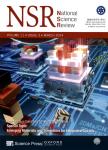Robust twin-field quantum key distribution through sending or not sending
作者机构:Jinan Institute of Quantum Technology State Key Laboratory of Low Dimensional Quantum Physics Department of Physics Tsinghua University Data Communication Science and Technology Research Institute School of Physics State Key Laboratory of Optoelectronic Materials and Technologies Sun Yat-sen University Shanghai Branch CAS Center for Excellence and Synergetic Innovation Center in Quantum Information and Quantum Physics University of Science and Technology of China Shenzhen Institute for Quantum Science and Engineering and Physics Department Southern University of Science and Technology Frontier Science Center for Quantum Information
出 版 物:《National Science Review》 (国家科学评论(英文版))
年 卷 期:2023年第10卷第4期
页 面:76-85页
核心收录:
学科分类:07[理学] 08[工学] 0839[工学-网络空间安全] 070201[理学-理论物理] 0702[理学-物理学]
基 金:supported by the Ministry of Science and Technology of China through National Key Research and Development Program of China (2020YFA0309701) National Natural Science Foundation of China (12174215, 12104184, 11774198and 11974204) Shandong Provincial Natural Science Foundation (ZR2021LLZ007) Key R&D Plan of Shandong Province(2021ZDPT01) Open Research Fund Program of the State Key Laboratory of Low-Dimensional Quantum Physics (KF202110)
主 题:quantum information quantum key distribution sending or not sending twin field source error
摘 要:The sending-or-not-sending(SNS) protocol is one of the most major variants of the twin-field(TF)quantum key distribution(QKD) protocol and has been realized in a 511-km field fiber, the farthest field experiment to date. In practice, however, all decoy-state methods have unavoidable source errors, and the source errors may be non-random, which compromises the security condition of the existing TF-QKD protocols. In this study, we present a general approach for efficiently calculating the SNS protocol’s secure key rate with source errors, by establishing the equivalent protocols through virtual atenuation and the tagged model. This makes the first result for TF QKD in practice where source intensity cannot be controlled exactly. Our method can be combined with the two-way classical communication method such as active odd-parity pairing to further improve the key rate. The numerical results show that if the intensity error is within a few percent, the key rate and secure distance only decrease marginally. The key rate of the recent SNS experiment in the 511-km field fiber is still positive using our method presented here, even if there is a ±9.5% intensity fluctuation. This shows that the SNS protocol is robust against source errors.



